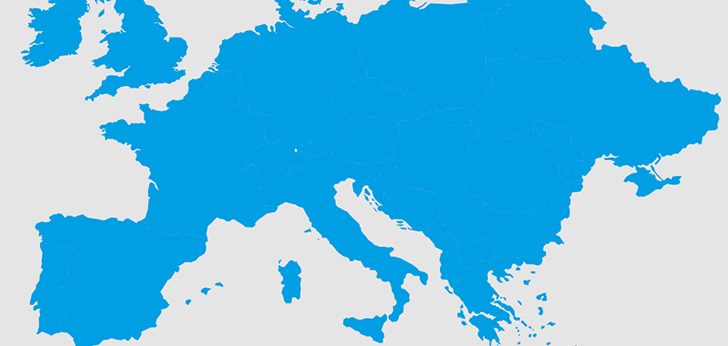A Changing World: Europe defines its future amid the threat of crisis and populism
The continent faces this year three litmus tests: elections to the European Parliament, Brexit (for now without an agreement) and downturn.

Fashion business’ game board has turned around. The legacy of the crisis, instability, the peak of populist movements, the attempts to move backwards in globalization and the threat of the global economic downturn has made almost all the predictions fail one by one. The world undergoes a transformation, and fashion, as a global player, must adapt and transform with it. MDS will go through the keys for the new order in the most important markets in the sector and how this can affect one of the most globalized business in the world.
Europe finds itself at a turning point. With the European Union having its model questioned, the nationalist and xenophobic movements advancing positions and the shadow of recession looming over the continent, this year will be key to determine whether Europe will be forged in crises.
The continent has been pressed for years by economists who warn that, with the epicenter of the world moving to Asia, Europe has the risk to fall in irrelevance in the new world order. For the time being, the community market continues to have a strategical role in the world, even though, behind closed doors, it faces great challenges.
The greatest one is how to manage the exit of a member that, for the first time, wants to leave the European Union. If there are not more changes, the United Kingdom will leave next March 29.
In a little more than two weeks of the outcome, there is not an agreement ratified by the Parliament that allows a soft and gradual Brexit, for which the uncertainty regarding the exit is still significant. In the first ballot, the plan agreed by Theresa May with Brussels was overwhelmingly rejected by the Parliament, and the Prime Minister has been postponing it since then.
What is the main point of disagreement? The backstop, the so-called Ireland safeguard, which is intended to prevent the return to a hard border in North Ireland. In order to avoid having to establish appropriate controls in that case, at the end of last year Brussels suggested to create that safety net.
The other great litmus test for the continent are the elections to the European Parliament, which will be held in May between 23 and 26. They will be the first elections without the United Kingdom (its MEPs have been divided among the rest of the countries) and the first after a wave of populist movements began to conquer Europe.

The elections will thus become a litmus test to measure the scope of this type of parties on a continental scale. The presence of populist movements in the parliaments of the European Union has increased in recent years, taking over countries such as Hungary, with Viktor Orbánat its head, Poland, where the far-right governs alone, or Italy, where the country is ruled by a coalition of left populists (Five Star Movement) and right populists (the North League), with the xenophobic Matteo Salvini as its visible face.
These types of movements have also climbed positions in France, with Marine Le Pen’s National Front, or Germany, where the far-right re-entered the German Parliament in 2017.
Will Europe face a crisis?
This year will also be key for the European economy. With Italy in recession since last year, there has been a wave of trimmed growth forecasts for the Euro area in recent months. Organizations such as the OECD or the European Commission attributed the revision of forecasts to political uncertainty, investment intentions and the imminent departure of the United Kingdom from the European Union.
The OECD expects the Euro area to grow 1% this year, compared to 1.8% initially estimated. Germany and Italy recorded the greatest deviations from the estimates. For the first European power, the organization trimmed its projection by more than half, from 1.6% previously estimated to 0.7%. The dependence of the German economy on exports in a context of increased protectionism and lower global demand have been the causes of the fall.
On the other hand, Italy’s forecast went from a 0.8% growth to 0.2%, after the country went into recession in the last quarter of 2018. For the United Kingdom, the forecasts were based on in a soft Brexit, anticipating a rise of 0.8%.
Immigration as a driver for growth
From a demographic point of view, Europe faces similar problems as other mature markets: aging and falling birth rates. In 2017, the natural population of the European Union (excluding migratory movements) fell for the first time since data began to be recorded in 1961.

The region managed to close the year with an increase of its population of 1.2 million inhabitants thanks to immigration, to add up to 512.7 million people. In particular, net immigration and statistical adjustments represented a growth of 1.3 million inhabitants. Only Germany, France, the United Kingdom and Italy account for 53.9% of the population, according to data from the European statistical agency Eurostat.
In 2070, there will be two active people for each person over 65 years
The fall in birth rates and the increase in life expectancy has caused a progressive aging of the continent. It is expected that the dependency ratio (measured on the relationship between the ratio of people over 65 and people between 15 and 64 years) will reach 51.2% in 2070, compared to the current 29.6%, which will entail that, for each elderly, there will be only two people of working age, according to the European Commission.
Currently, 15.6% of the population of the European Union is less than fourteen years old, 64.9% is of working age and 19.4% are 65 or older. Italy, Greece and Germany have the oldest population, with more than 20% of the inhabitants over 65 years old.
In Europe, fashion consumption is slowing down, like in other mature markets
Stagnant but without Retail Apocalypse
Europe remains as one of the largest markets for fashion in the world. In 2018, sales of clothing and footwear reached 325.66 billion euros in the region, according to data collected by Statista, and it is estimated that they will increase to 334.56 billion euros this year and 344.7 billion euros in the following.
Like other mature markets, such as the United States, retail fashion consumption is slowing down in Europe, with the exception of the double-digit growths of some eastern countries, such as Romania.
A commercial density of 1 square meter per inhabitant has enabled Europe to escape the Retail Apocalypse
Although there have been closures and several of the distribution giants are undergoing a transformation plan, Europe has dodged situations such as that of the Retail Apocalypse, due to having a much lower commercial density than the United States, of 1 square meter per inhabitant.
The exception is the United Kingdom, where rising rents, the labor reform, the fall in consumption and the uncertainty with the Brexit have drowned in recent years retailers like Marks&Spencer or House of Fraser, rescued in the very last moment by Mike Ashley, owner of Sports Direct.


info@themds.com
Validation policy for comments:
MDS does not perform prior verification for the publication of comments. However, to prevent anonymous comments from affecting the rights of third parties without the ability to reply, all comments require a valid email address, which won’t be visible or shared.
Enter your name and email address to be able to comment on this news: once you click on the link you will find within your verification email, your comment will be published.